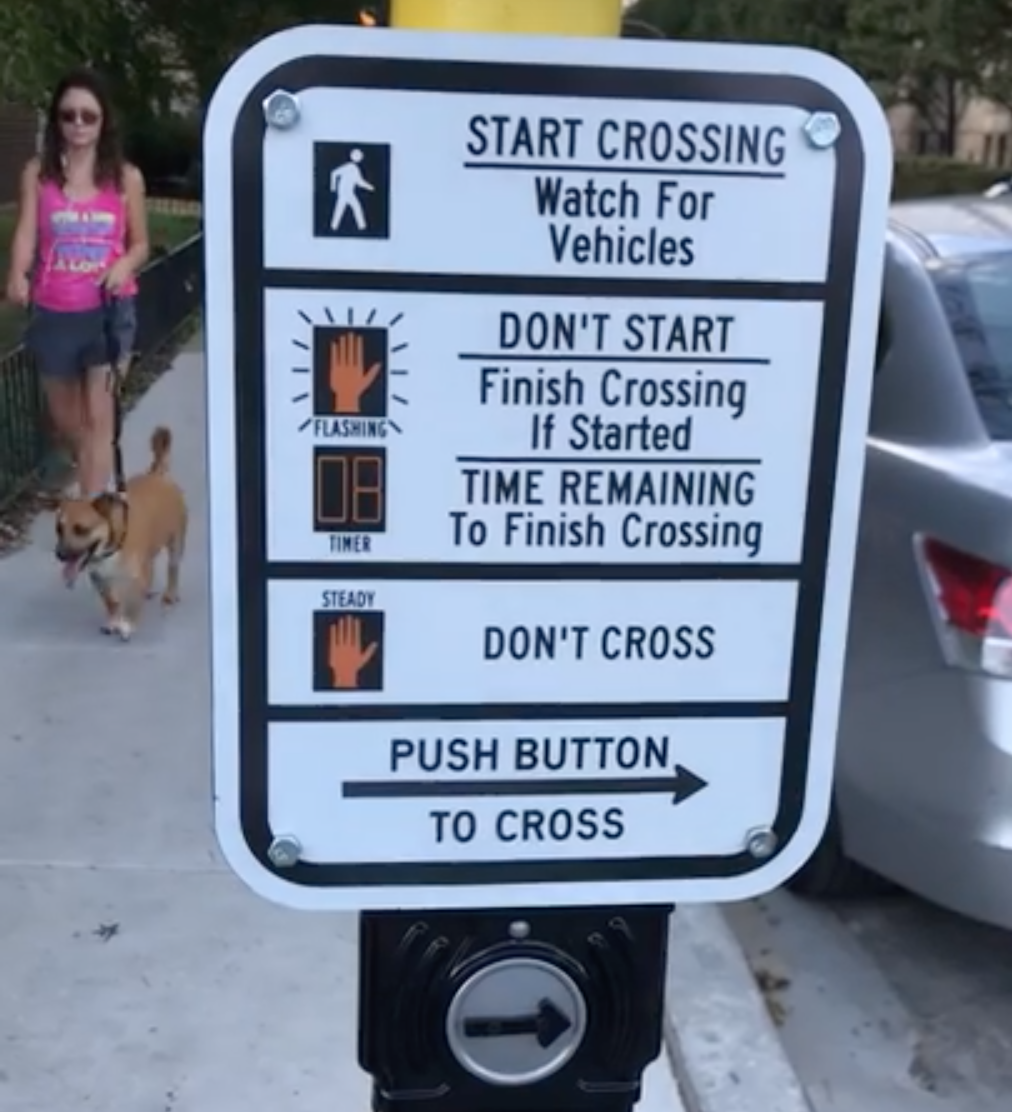In November Curbed noted that Chicago lagged way behind peer cities when it comes to installing accessible pedestrian signals, which help people with visual impairments navigate the streets, with only ten such crosswalks installed. The signals communicate info about the "Walk" and "Don't Walk" intervals at signalized intersections with audible tones and tactile surfaces.
However, today Mayor Lori Lightfoot announced plans to help level the playing field by adding up to 100 new accessible signals across the city in the next two years via a partnership between the Chicago Department of Transportation and the Mayor’s Office for People with Disabilities. Lightfoot made the announcement on the 29th anniversary of the Americans with Disabilities Act.
“Chicago’s mission is to be the most inclusive and accessible city in the nation, and that means building a transportation system that fully serves every resident,” said Lightfoot in a statement. “I commend the collaborative efforts of CDOT and MOPD as they significantly increase the number of accessible pedestrian signals across our city, enabling both residents and visitors with visual disabilities to live more freely and safely throughout Chicago.”
Despite their appearance, the accessible pedestrian signals are not the much-hated “beg buttons” that pedestrians are sometimes required to press in order to permission to cross the street. The only purpose of the push buttons, which constantly emit a “tock” sound to alert people with visual impairments of their locations, is to indicate the status of the walk signal via an audible alert when pressed. Since the button doesn’t actually activate the walk signal, you don’t have to push it if you don’t need the audible cue.
Under the new policy, CDOT will incorporate APS signals into all new stoplight installations, road reconstruction projects and signal modernization projects. CDOT and MOPD are currently working on a federally-funded pilot project to develop best practices for the design and installation of the signals. Through the pilot, CDOT will install the signals at up to 50 intersections over the next two years at intersections identified with input from people with visual impairments.
In choosing the locations, six categories of intersections, including the central business district; residential and commercial locations; institutional locations; six-way intersections; university campuses; and locations suggested by stakeholders. About 50 additional installations of APS will take place via upcoming roadway, signal modernization and new traffic signal projects over the next two years, the city said.
Over the next year, as part of a project to install interconnected traffic signals, CDOT will install accessible signal at these locations: Roosevelt Road at Wood, Loomis, Blue Island and Morgan; and on Hyde Park Boulevard at 57th Street, Cornell Drive and 57th Street and Stony Island Avenue and 69th Street. CDOT is also including APS signals at intersections on Ashland from Harrison to Washington as part of a stoplight modernization project.
For more information, and to provide input, on the pilot project, go to: TinyURL.com/ChicagoAPS.




